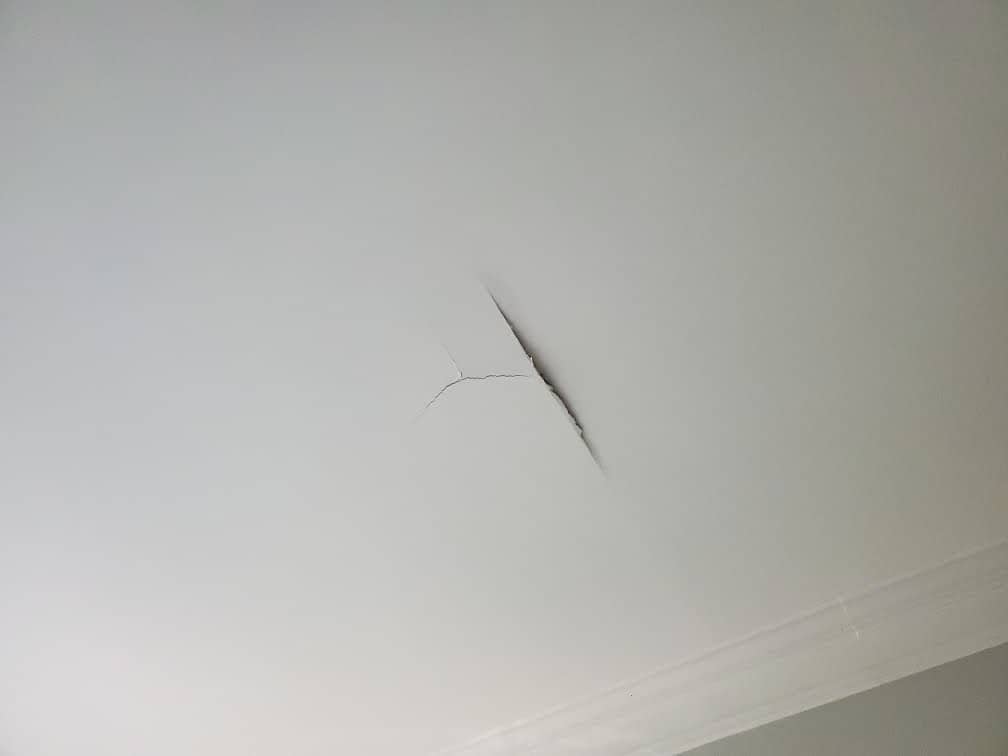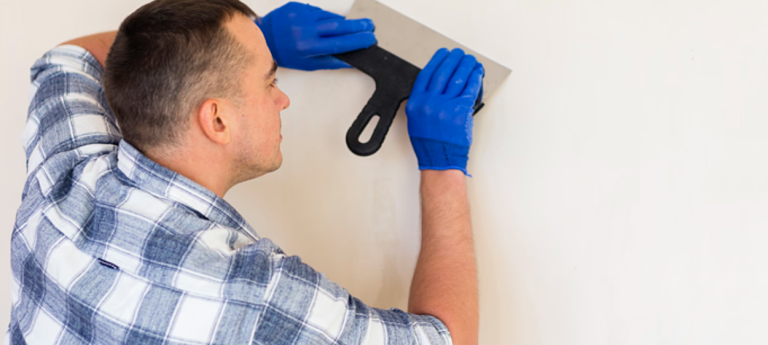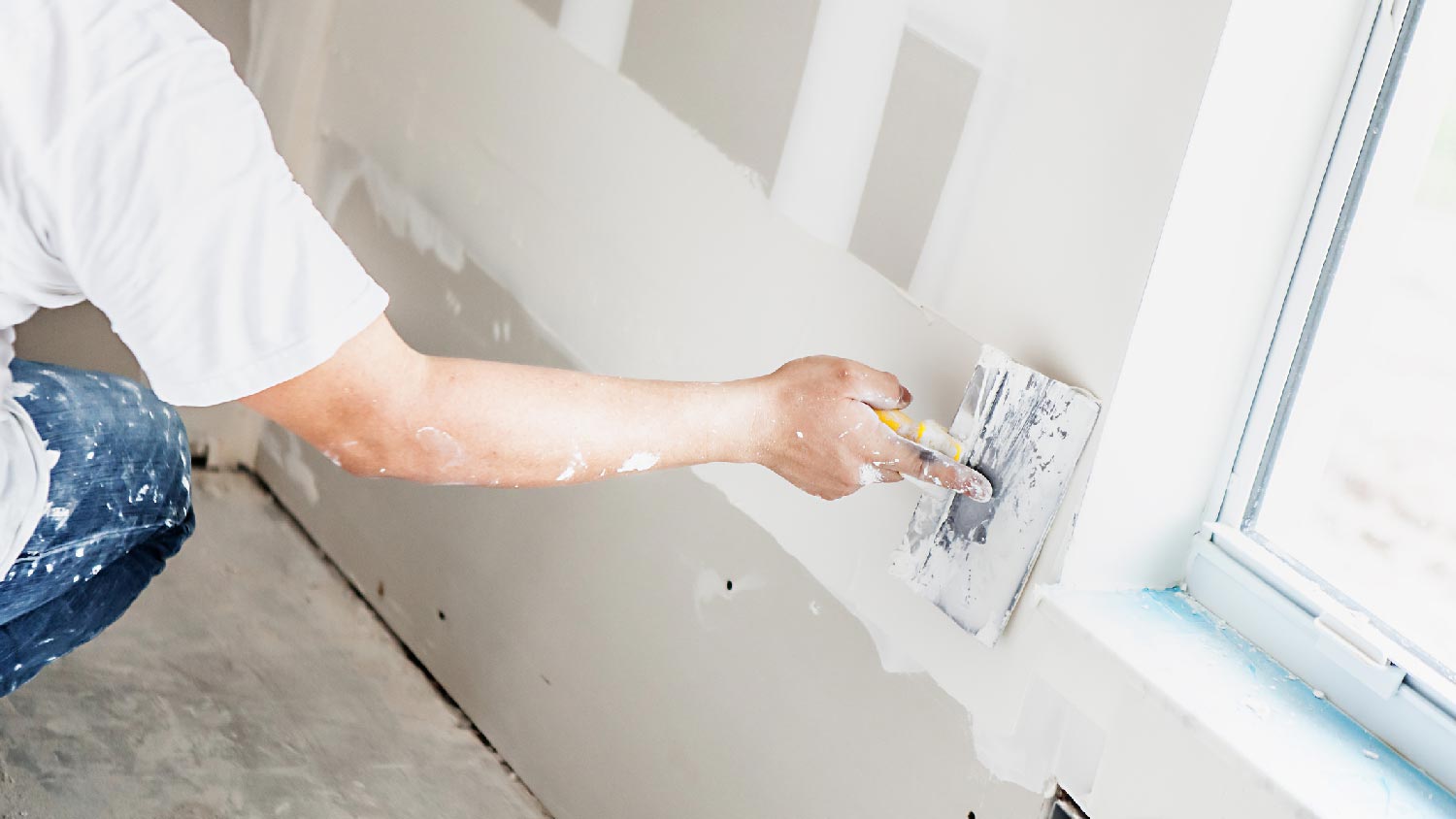Upgrade your interiors using Drywall Repair Ogden UT and creative painting styles.
A Comprehensive Overview to Mastering Drywall Repair and Installment
This guide supplies an extensive exploration of drywall repair service and installment, providing to both amateurs and skilled experts. It lays out necessary devices, strategies for patching and hanging sheets, and the crucial ending up processes. drywall contractors. By understanding usual challenges, people can accomplish polished outcomes. Understanding these abilities not just enhances one's home but also builds confidence in do it yourself undertakings. What fundamental pointers will ensure an effective project throughout?
Important Devices for Drywall Repair and Setup
When starting on drywall repair service and setup, a couple of necessary tools can considerably improve the efficiency and high quality of the job. A drywall blade, commonly offered in various sizes, is essential for using joint substance and smoothing joints. A taping blade is additionally essential for feathering sides and ensuring a smooth coating. In addition, a drywall saw or utility knife permits accurate cutting of drywall sheets to fit any area.

Step-by-Step Guide to Patching Holes
Patching openings in drywall is an uncomplicated procedure that can recover the wall's look and integrity. To begin, the area around the hole need to be cleansed and any kind of loose particles removed. For small holes, an easy spackle or joint compound can be used with a putty blade. Larger holes may need a spot; an item of drywall can be reduced to fit the opening, secured with adhesive or screws, and after that taped around the edges. When the patch is in place, joint substance is used over the spot and feathery out to mix with the bordering wall. After the substance dries out, fining sand is required to achieve a smooth finish. Ultimately, the fixed area can be topped and repainted to match the remainder of the wall surface. This approach assures a seamless repair work, enhancing the general appearance of the drywall and keeping its structural stability.
Methods for Hanging Drywall Sheets
After successfully fixing openings in drywall, the following step entails hanging new drywall sheets to produce a smooth surface. To achieve this, one have to start by measuring the wall room properly and cutting the drywall sheets to fit. It is important to hang the sheets horizontally for much better architectural integrity, beginning with the top and functioning downwards.
Using a drywall lift can simplify the procedure, particularly for ceiling installments. Once placed, protecting the sheets with drywall screws at periods of regarding 12 inches along the sides and 16 inches in the area is crucial. This assures a firm hold and decreases the threat of drooping. For corners, the sheets should be reduced to fit comfortably, enabling cleaner joints. Finally, it is recommended to startle the joints between sheets to strengthen the total structure, creating a more long lasting finish all set for the next stage in the drywall setup procedure.
Completing Touches: Insulation and Mudding
Completing the drywall setup includes the vital steps of mudding and taping, which guarantee a sleek and smooth finish. Taping needs the application of joint tape over the seams in between drywall sheets. Interior Painting. This tape can be either paper or fiberglass mesh, with each kind offering unique benefits. After taping, the following step is mudding, where joint compound, or "mud," is used to cover the tape and fill any kind of imperfections
Making use of a drywall knife, the compound must be spread uniformly, making certain a feathered edge to lessen visible changes. Several coats are frequently required, with sanding in between each layer to achieve a smooth surface area. Cautious interest during this procedure is essential, as it significantly influences the last look of the wall surface. With the ideal method and perseverance, completion result will be a flawless structure all set for painting or finishing touches.
Common Blunders to Prevent in Drywall Projects

Another common mistake is not enabling enough drying out time between coats, which can catch moisture and jeopardize the surface. Ignoring to feather the sides correctly can develop noticeable lines and flaws. Lastly, missing sanding or using incorrect techniques might leave harsh spots. By knowing these mistakes, individuals can considerably improve the quality of their drywall projects and achieve a professional-looking finish.
Often Asked Concerns
Can I Repair Drywall Without Professional Aid?
Yes, one can repair drywall without specialist help. With the right devices, products, and advice, people can efficiently manage minor repairs. Considerable damages may need specialist experience for perfect results and longevity.
Exactly How Long Does Drywall Compound Take to Dry?
Drywall substance typically takes between 24 to 2 days to completely dry totally, depending upon variables such as humidity and temperature. Thinner layers may dry out faster, while thicker applications need more time for excellent outcomes.
What's the Best Type of Paint for Drywall?
The very best type of paint for drywall is generally a water-based latex paint. It offers outstanding insurance coverage, sturdiness, and ease of application, making it optimal for interior wall surfaces while enabling very easy cleaning with soap and water.

How Do I Avoid Mold on Drywall?
To stop mold and mildew on drywall, guarantee correct air flow, control moisture levels, use mold-resistant materials, and quickly attend to any leakages. Regular inspections and immediate removal of water damage are likewise vital for long-lasting prevention.
Is Drywall Recyclable After Removal?
Drywall is recyclable after elimination, supplied it is without impurities like mold, paint, or various other hazardous materials. Reusing centers can process it right into new products, advertising sustainability and lowering garbage dump waste in construction.
When beginning on drywall repair work and installation, a few necessary tools can substantially boost the effectiveness and top quality of the work. After successfully repairing openings in drywall, the next action involves hanging brand-new drywall sheets to create a smooth surface. Finishing the drywall setup entails the important actions of taping and mudding, which ensure a polished and smooth finish. Attaining a refined coating in drywall jobs can be challenging, and numerous common blunders can undermine the high quality of the work. Yes, one can repair drywall without professional aid.